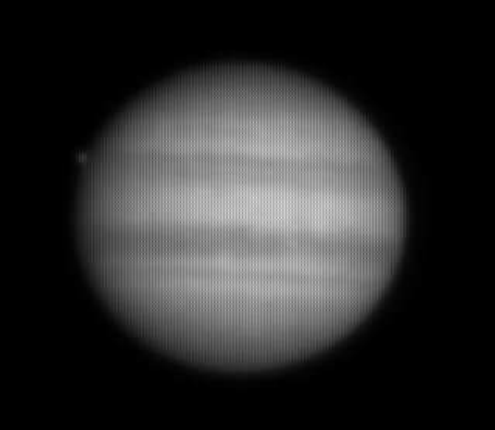
Handbook for SXV-M5C Issue 1 August 2004
17
‘Autosave’ directory. Dozens of images will be saved, but only one or two will be
satisfactory for further processing.
To start the Autosave process, call up the SXV Camera Interface and select the
‘Continuous Mode’ check box at the top (make sure the rest are unchecked). Now
check the ‘Autosave Image’ checkbox near the bottom of the window. If you now
click on ‘Take Picture’ the automatic sequence will begin and will not stop until you
press a computer key. The images will be saved in FITs format with sequential names
such as ‘Img23, Img24….’ and will be found in the ‘Autosave’ directory (or a sub-
directory of Autosave, set up in the program defaults menu).
The exposure time needed for good planetary images is such that the image histogram
has a peak value at around 127 and does not extend much above 200 (Ignore the
major peak near zero, due to the dark background). If you use too short an exposure
time, the image noise level will be increased, and if too long a time is used you will
saturate the highlights and cause white patches on the decoded image. With the
recommended focal length, Jupiter and Mars will both need an exposure time of
between 0.1 and 1 seconds and Saturn will need between 0.5 and 2 seconds.
Processing a planetary image:
Planetary images have one major advantage over deep sky images, when you come to
process them – they are MUCH brighter, with a correspondingly better signal to noise
ratio. This means that aggressive sharpening filters may be used without making the
result look very noisy and so some of the effects of poor seeing can be neutralised.
A raw image
Try applying an ‘Unsharp Mask’ filter with a radius of 5 and a power of 5. This will
greatly increase the visibility of any detail on the planet, but the optimum radius and
power will have to be determined by experiment. In general terms, the larger the
image and the worse the seeing, then the wider the radius for best results. My Jupiter
shots are usually about half the height of the CCD frame and I find that the ‘radius 5,
power 5’ values are good for most average seeing conditions. If you have
exceptionally good conditions, then a reduction to R=3, P=3 will probably give a


















